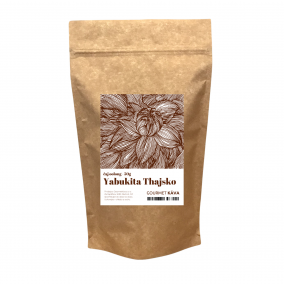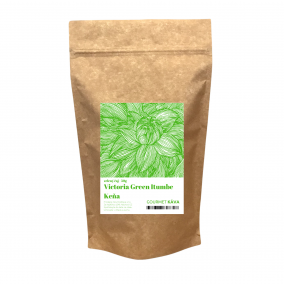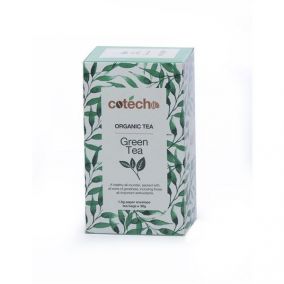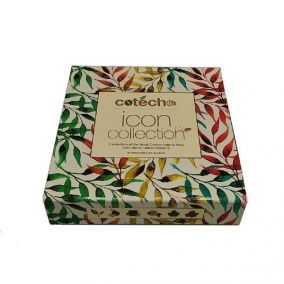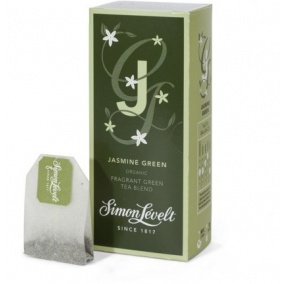What to pay attention to and on what parameters to choose a green tea that will taste good and also benefit your health?
Walking into a tea shop and saying you want to buy green tea when asked what your preference is is the same as saying you want to buy a car at a car dealership. The question "WHAT" must be asked!
Even with green tea, it's not easy. In a brick-and-mortar store, you'll be guided through the selection by trained staff, BUT when shopping online in an e-shop, you need to know what to look for.
We don't want to train you in the different varieties, that's the next level. Let's now explain the very simplest essentials of choosing quality green tea.
Should be green
When it's green, it's really green! This type of tea does not go through a fermentation process like black tea, for example, which means that dried green tea leaves should actually be green.
It's true that if you brew quality green tea, a light greenish olive-colored liquid is produced. And the brewed leaves will regain their distinctive green color. In the case of poor quality tea, the leaves will be brown or even black after steaming.
Be concerned about its origin
A seller of quality tea should guarantee the origin of their goods. You should have information about the country of origin, as well as whether the tea was grown according to organic farming principles. You will usually come across the wording "organically grown tea". Believe me, it is not at all useless to know where your tea comes from and under what conditions it was grown.
PREFERABLY SYMPETIC AND CERTAINLY WHOLE LEAVES
If you really want to enjoy yourself and also get all the available health benefits from the drink, prefer tea made from dried whole leaves. Then you can enjoy the right taste, the intoxicating aroma and the optimal content of all valuable nutrients.
Don't look for quality in cheap bagged tea, the tea leaves are crushed and the bags are often filled with what is essentially "tea dust" - the waste from the production of the highest quality teas.
Don't be fooled by the fact that even tea prepared in this way will be surprisingly rich in colour. In any case, it will lack the typical aroma and flavour because it does not contain enough of the essential oils responsible for these properties.
It is certainly possible to buy quality bagged teas, although they will undoubtedly never reach the quality of a premium brewed tea.
CHECK FOR FRAUD
The rule of thumb is that tea should be consumed within 12 months of its processing. It should be noted, however, that it is not easy to catch up with the processing date of tea leaves. The packaging tells you when the tea was packed, not when it was processed by the grower. And tea leaves often travel a long way + change hands several times before they reach the shelves of shops or e-shops.
WHAT GREEN TEA INCLUDES
Now that you know what to look for when choosing green tea, we can tell you what such quality tea contains...
POLYPHENOLS
Natural substances to which it owes its typical taste. The more polyphenols a particular type of tea contains, the more bitterness and characteristic astringency you feel when drinking it.
CATECHINES AND OTHER ANTIOXIDANTS
This group includes the oft-maligned EGCG (epigallocatechin gallate), a very potent antioxidant that protects us from the negative effects of free radicals. These are therefore substances with proven benefits for our health.
ENZYMES
The enzymes in green tea do not interfere with the taste of the resulting drink. Anyway, they are responsible for the change in colour of the plucked tea leaf. They are the ones that cause the deep green colour to turn brownish.
AMINOXYLINES
It may seem surprising, but green tea actually contains amino acids. The largest representation here is theanine, which is not widespread in the plant kingdom at all. In addition to tea, it is found in the leaves of the Ilex Guayusa tree and in a species of mushroom. In any case, the theanine is behind the positive effects of green tea on our psyche. It induces a feeling of relaxation and suppresses stress.
SUPER THOUGHTS
They are not talked about much in connection with tea. Yet they are substances that significantly affect the aroma of the drink. Depending on the type of volatile substance contained in a given type of green tea, you can enjoy herbal or woody aromas, floral aromas, etc.
COFFEE
It is an integral part of green tea, although many consumers do not realize it. It depends on the type of tea, of course. Some varieties contain less caffeine (Kukicha, for example), while others (Gyokura or matcha) offer more of the stimulant. Otherwise, the younger the tea leaf is when plucked, the more caffeine it contains. There is a reason for this, as the caffeine in the young shoots protects the plant from insects. Older, tougher leaves no longer need this protection.
HOW THE COMPOSITION CHANGES AFTER HOT WATER INFUSION
Brewing in cooler (or cold) water is a way to reduce the caffeine content of the resulting beverage. This is because higher temperatures release more caffeine into the water. And so do the catechins responsible for the bitter taste. So a less bitter green tea with less caffeine requires steeping in cooler water and vice versa.
It's definitely worth knowing about green tea, because then you'll have a clear idea of which one to choose and how to prepare it.
Oolong from Thailand, which combines the flavours of green tea and light oolong. Light citrus notes are complemented by a subtle grassiness.
Victoria Green Itumbe is the orthodox take on green tea. The garden is situated in the volcanic mountains between Lake Victoria and the Masai Mara forest. Flavour: herbaceous and grassy with fruity undertones
Victoria Green Itumbe is the orthodox take on green tea. The garden is situated in the volcanic mountains between Lake Victoria and the Masai Mara forest.
Flavour: herbaceous and grassy with fruity undertones
Tea bags of organic green tea.
Tea bags of organic green tea.
A selection of Ceylon's finest organic teas and natural herbal infusions.
A selection of Ceylon's finest organic teas and natural herbal infusions.
Tea bags of organic green tea with jasmine
Tea bags of organic green tea with jasmine
Tea oolong Yabukita Thailand 50g
Green tea Victoria Green Itumbe Kenya 50g
Tea Cotecho Organic Green Tea 30 g
Tea Cotecho gift set 9x10 bags
Green tea with jasmine Simon Lévelt BIO 35g



























































































